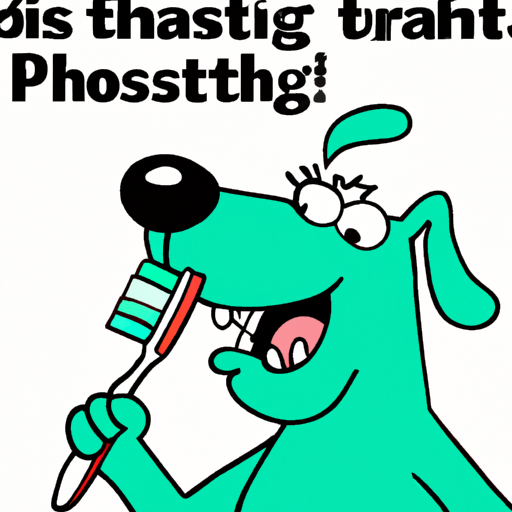Dog owners, we know how much you love your furry friends, but let’s face it…their breath can sometimes be less than pleasant. But don’t worry, we’re here to help. This article will guide you through a few simple steps you can take to help improve your dog’s oral hygiene.
1. Understanding the Causes of Bad Breath in Dogs
First, let’s understand why dogs have bad breath. It’s not just because they love to sniff and taste everything in sight, though that certainly doesn’t help. Bad breath in dogs, also known as halitosis, can be caused by a variety of factors:
- Poor Oral Hygiene: Just like humans, dogs can develop plaque and tartar if their teeth aren’t regularly cleaned.
- Diet: Some foods can contribute to bad breath.
- Health Issues: Bad breath can sometimes be a symptom of underlying health issues, such as kidney disease or diabetes.
| Causes | Explanation |
|---|---|
| Poor Oral Hygiene | Unattended plaque and tartar build-up |
| Diet | Certain food items contribute to bad breath |
| Health Issues | Could be a symptom of serious health concerns |
2. Regular Dental Check-ups
Just like you need to go to the dentist for regular check-ups, so does your dog. Regular dental exams can help detect any potential problems early on, like gum disease or tooth decay, which can contribute to bad breath. Your vet can also perform professional cleanings, which can help remove plaque and tartar buildup that you can’t reach with regular brushing.
3. Brush Your Dog’s Teeth Regularly
Yes, you read that right. Brushing your dog’s teeth might seem strange, but it’s an important part of maintaining their oral health. Start with a dog-friendly toothpaste (never use human toothpaste, as it can be harmful to dogs) and a soft-bristled toothbrush.
- Start by letting your dog taste a small amount of the toothpaste.
- Gradually, over a few days, work up to brushing their teeth just like you would your own.
- Remember to be gentle, and make it a positive experience for your dog by giving them lots of praise and rewards.
4. Consider Your Dog’s Diet
What your dog eats can have a big impact on their breath. Some foods can contribute to bad breath, while others can actually help improve it. Dry food, for example, can help scrape off plaque and tartar, while certain types of wet food can contribute to bad breath. Talk to your vet about the best diet for your dog’s oral health.
5. Use Dental Treats and Toys
There are plenty of dental treats and toys on the market that can help keep your dog’s teeth clean and their breath fresh. These products are designed to help scrape off plaque and tartar, and many of them also contain ingredients that help freshen breath.
- Dental chews
- Dental toys
- Breath-freshening treats
FAQ
Q: How often should I brush my dog’s teeth?
A: Ideally, you should brush your dog’s teeth daily, but at least a few times a week.
Q: Can bad breath in dogs be a sign of a more serious health problem?
A: Yes, in some cases, persistent bad breath can be a sign of oral disease or other health issues.
Q: Is it really necessary to take my dog to the dentist?
A: Yes, regular dental check-ups are important for your dog’s overall health.
Q: What kind of treats and toys should I look for?
A: Look for products that are specifically designed for dental health, and always choose size-appropriate toys for your dog.
Q: Can I use human toothpaste to brush my dog’s teeth?
A: No, human toothpaste can be harmful to dogs. Always use a toothpaste that’s specifically designed for dogs.



